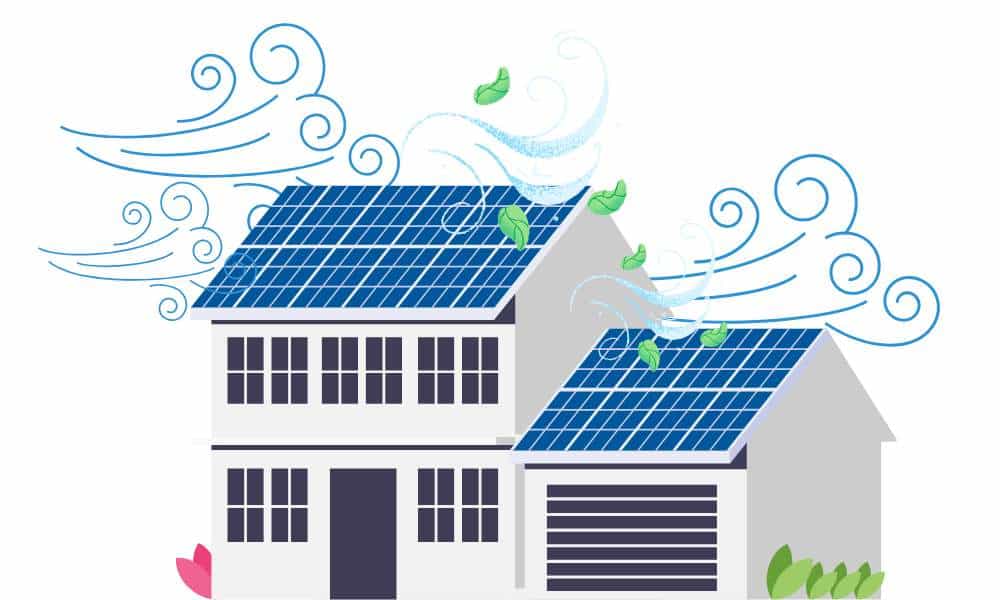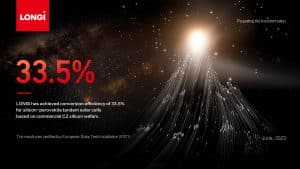Australia’s diverse climate poses unique challenges for solar installations, especially in high-wind areas. Cyclone-prone regions, particularly in the northern parts of Western Australia (WA), the Northern Territory (NT), and Queensland (QLD), experience extremely high wind speeds that can put conventional solar panel installations to the test. In these areas, ensuring the resilience of solar setups is crucial for maximising energy output and preventing damage during severe weather events.
High-wind areas in Australia
With the nation’s diverse geography, there are several high-wind zones where solar installations should be planned carefully to withstand weather conditions. The northern regions including parts of WA, the NT, and QLD are especially prone to cyclones, which bring extreme winds that can easily reach speeds exceeding 200 km/h. Coastal areas and elevated inland regions may also experience high winds, with less risk of cyclones.
If you’re considering these areas, you need to understand how high winds impact solar panels. Strong gusts can place tremendous strain on panel mounts, connectors, and frames. Even if panels are undamaged, poor installation or inadequate mounting systems can cause panels to loosen, shift, or, in extreme cases, detach entirely. This creates a safety hazard and risks significant property damage.
Those in coastal regions have to deal with salt spray and high humidity that can accelerate corrosion and degrade solar panel performance.
Due to these factors, wind ratings for solar panels are vital to consider in high-wind areas. Solar panels are typically rated according to their ability to withstand different wind speeds, measured in km/h or m/s. For cyclone-prone regions, a higher wind rating is necessary to ensure the panels will stay secure even in severe conditions. Choosing panels and mounting systems designed with these factors in mind can make a big difference in the longevity and safety of solar installations.
Solar panel durability and wind resistance
Typically, solar panels are made with tempered glass, which is strong and resistant to impact, and aluminium frames, which are lightweight yet durable. The mix of these materials helps ensure solar panels can absorb wind pressure without cracking or breaking.
Another important aspect of solar panel durability is the wind load rating, which indicates the maximum wind speed a panel can withstand without failing. In high-wind areas, choosing solar panels with high wind load ratings is important. They are often expressed in pascals (Pa), which measure the wind pressure a solar panel is designed to withstand.
For instance, solar panels in high-wind zones must be rated to withstand wind speeds up to 150-200 km/h or more, depending on the region’s risk level. The higher the wind load rating, the better the panel can handle extreme weather conditions without becoming dislodged or damaged.
The design of the solar panels can also improve wind resistance. Aerodynamic solar panels are designed to reduce wind drag and minimise pressure on the panel during high winds. They often have a low profile or sloped edges, letting the wind flow more smoothly over the surface. Also, frameless panels are becoming more popular for installations in high-wind areas. They have smooth edges and lack a protruding frame that can catch the wind, reducing the risk of wind damage. However, these panels still require solid mounting systems to ensure they remain securely attached to the roof.
While the panels themselves must be durable, the mounting system is equally important for holding the panels in place during high winds. The mounting system should be designed to secure the panels firmly and prevent shifting, lifting, or detachment. It may involve the use of additional reinforcements, such as wind anchors, heavy-duty rails, and adjustable brackets.
There are also some mounting systems that are adjustable to let panels be tilted at a specific angle that reduces wind resistance. On the other hand, in areas with consistently high winds, low-profile mounting systems that secure panels close to the roof are often used to reduce the wind load on the panels.
The role of clamping zones

In high-wind regions, following the specified clamping zones means the difference between a secure installation and one that risks damage during severe weather. When wind speeds reach cyclone levels, the pressure on the edges of panels can be extreme, especially if clamps are not placed properly.
Australian Standard AS1107.2 defines the wind regions and load rating requirements for clamping zones, specifically focusing on Cyclone Zones C and D, which cover the coastal areas of Northern Australia, including parts of QLD, Western Australia (WA), and the NT. These zones are prone to severe tropical cyclones, requiring structures to be designed with increased robustness and resilience.
The clamping zones in these high-wind areas must meet strict strength and durability standards to withstand the region’s specific wind forces. These load ratings ensure that clamping materials and connections are capable of enduring high wind pressures and maintaining structural integrity.
Adhering to AS1107.2 enhances safety, ensuring structures can withstand extreme weather and reducing the risk of failure. Compliance is also legally required, avoiding regulatory issues. Moreover, these standards promote longer-lasting structures, as they focus on durability, resilience, and the unique challenges of the Australian climate.
When installing solar panels with proper clamping in high-wind areas, always refer to the manufacturer’s guidelines for clamping zones as each panel model may have different requirements. Also, choose a mounting system designed for high-wind resistance as they usually have features that complement clamping best practices.
Top solar panel brands with high Pascal ratings
SunPower
SunPower Maxeon solar panels are known for their high efficiency and durability, including their ability to withstand harsh weather conditions. Some models within the Maxeon line are certified to withstand wind loads of up to 2400 Pascals.
There are several factors that contribute to the high wind resistance of their Maxeon solar panels—one is their robust design built with a strong, durable frame and the tempered front glass that enhances their strength and resistance to impacts from hail and windborne debris. Maxeon solar panels also come with advanced cell technology contributes to the overall structural integrity of the panel.
Jinko Tiger Neo N-Type
The Jinko Tiger Neo has an enhanced mechanical load capacity that can withstand wind loads of up to 4000 Pascal and snow loads of 6000 Pascal. Its high-efficiency N-type cells combined with advanced manufacturing techniques result in a product that can withstand extreme weather conditions, making them ideal for many regions in Australia.
DAH Solar DHM-60X10-430
DAH Solar provides a range of high-efficiency solar panels, designed to withstand harsh environmental conditions, including strong winds. The 2400 Pascal wind load rating makes them also suitable for many Australian locations.
Aleo Solar
Aleo Solar is known for its high-quality, German-engineered solar panels. These panels are built to last with a focus on durability and performance. The panels have an impressive rating of 3,600 Pascal and hold certifications for resistance to flying fire, radiant heat, and hailstones up to 40 mm in hail protection class 4.
Incorporating solar energy in high-wind areas requires specialised solutions to ensure resilience and efficiency. By choosing high wind-rated solar panels, robust mounting systems, and adhering to certain standards, property owners can secure their installations against severe weather conditions. These measures enhance safety reduce potential damage and help make solar energy a reliable, long-term option in Australia’s diverse climate zones.
Energy Matters has been in the solar industry since 2005 and has helped over 40,000 Australian households in their journey to energy independence.
Complete our quick Solar Quote Quiz to receive up to 3 FREE solar quotes from trusted local installers – it’ll only take you a few minutes and is completely obligation-free.














































